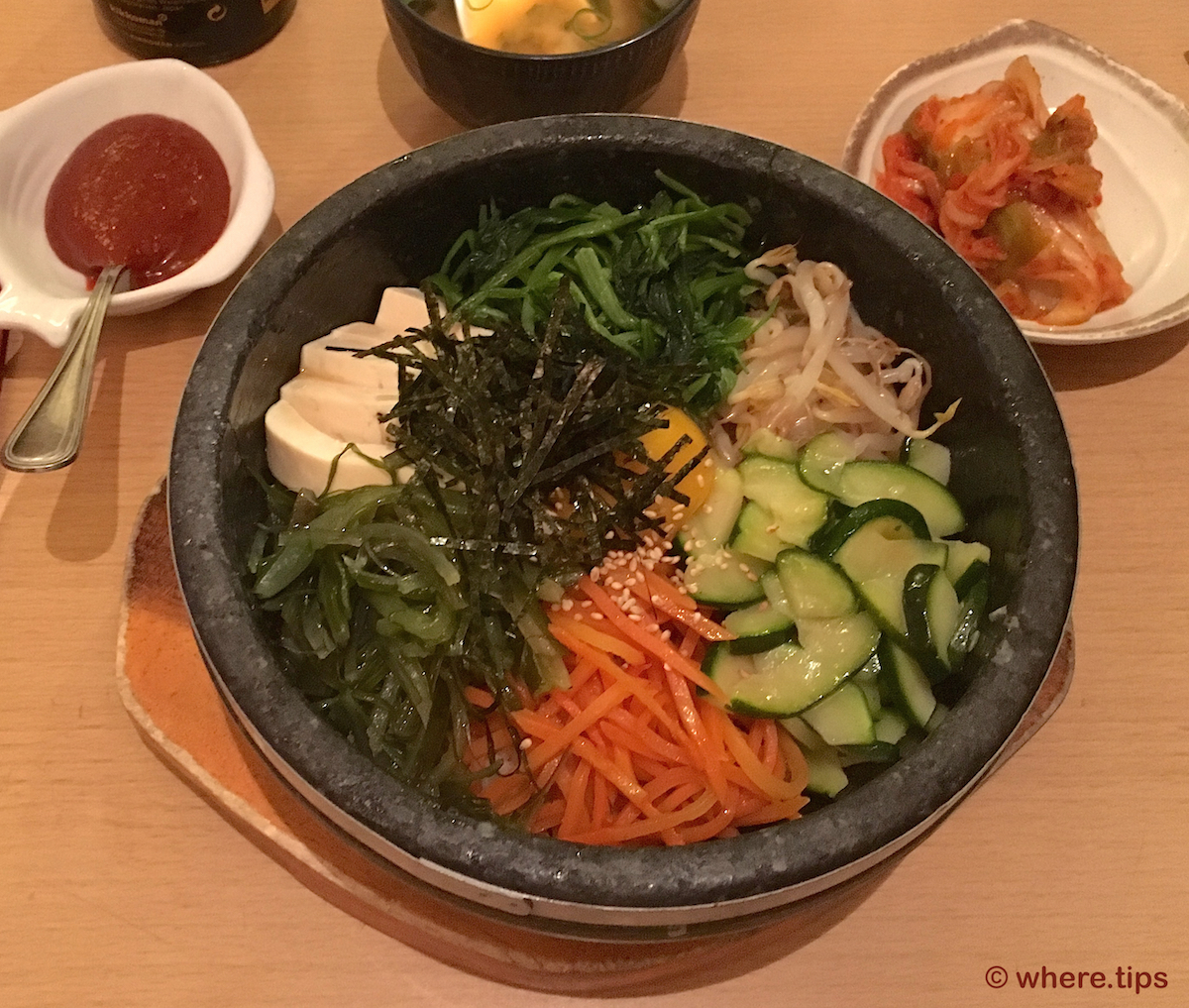Bib … Bibim … Bibimbap
Bib… what? Bibimbap. Pronounced BEE-bim-bap. Easy eh? Bibimbap is a Korean dish and it means mixed rice. Actually, that’s a bit of a misnomer because when it arrives at the table nothing is mixed – you have to do that yourself. You’ll get a bowl of warm rice topped with various neatly arranged seasonal vegetables, sesame seeds and some sliced beef, chicken, fish or tofu. Traditionally, there’s also a raw egg nestled on top but you can certainly order it without if you’re squeamish or pregnant (or both). Some restaurants offer a fried egg instead to test your chopstick chopping skills.
Bibimbap is always accompanied by a savoury, sweet and spicy red paste called gochujang (go-shoe-jaing). It’s made from chilli powder, fermented soyabean paste, rice powder and salt and it tastes much better than you might expect – especially given the running-shoe image that its name might conjure-up. Use your chopsticks to mix the bibimbap ingredients together with the gochujang and then either continue using the chopsticks or else switch to the spoon provided to enjoy your creation.
There’s one version of bibimbap that tops all others; Dolsot Bibimbap. A dolsot (dol-sot) is a stone pot. This is heated before the ingredients are added and it arrives at the table on a wooden holder to protect you and the table from the heat. As soon as it arrives, you need to get mixing with the chopsticks. The more you mix, the better the taste will be. There’s no hurry; the dolsot ensures that you’re as likely to burn your tongue on the last mouthful as you are on the first. Even when the table has been cleared, you’ll still be able to warm your hands below where the dolsot was sitting.
Kimchi
Almost every Korean meal involves Korea’s national dish – kimchi. It’s a fiery mix of chilli and fermented cabbage or radish and there are thousands of recipes, many of them handed down from generation to generation. I once had the honour of attending a wedding in Korea and expressed my love of kimchi at the wedding banquet. By the end of the feast there was a queue of elderly Korean ladies all wanting to give me their family’s recipe for the fermented wonder. Each one whispered confidentially this is the best recipe you’ll ever find. One winter I will make them all and declare a winner.
Where? I ate the pictured dolsot bibimbap (with tofu and raw egg) at Hana, my favourite Korean restaurant in Brussels. It always comes with gochujang, kimchi, miso soup and a smile. Hana also serves excellent assorted sashimi with the usual trimmings and with one of my all-time favourite salad leaves, green shiso. This Japanese leaf has a wonderfully astringent, palate-cleansing taste. The sashimi makes a refreshing trailer before the dolsot bibimbap main event and both go well with a Korean Hite rice beer. If Brussels isn’t on your itinerary then check-out your nearest Korean restaurant – if you’re lucky, they’ll also serve dolsot bibimbap … with a smile.
If you like unusual food then be sure to check out my other unusual food posts.


It was wonderful. Exactly as described